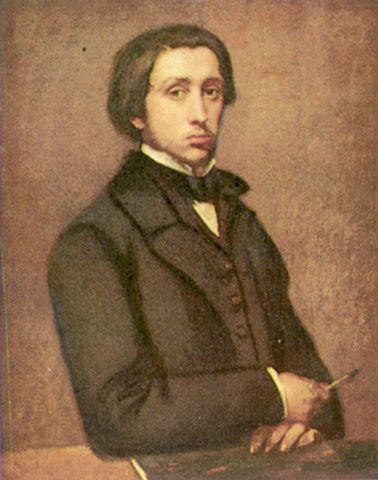*Image Credit: Wikimedia Commons In the capital of France, Augustin and Celestine De Gas welcomed a young boy on July 19, 1834 – their first child and, eventually, one of the most famous painters in the nation’s considerable artistic history. Known for his attention to detail and distinct skill with both paint and ink, most consider Edgar Degas one of the founders of the Impressionist movement in the latter half of the 19th century. Degas entered the Lycee Louis-le-Grand at the age of eleven. A capable student, Degas had learned to lean upon his father and grandfather for support after the death of his mother in 1847. When he graduated in 1853 after studying literature, he registered as a copyist at the Louvre – much to his father’s dismay. Having risen to moderate wealth as a banker, Augustin wished to see his son enter the legal profession. Though Edgar did end up entering the University of Paris in November of 1853, he generally ignored his law classes in favor of painting and drawing. April of 1855 saw him gain entry to the Ecole des Beaux-Arts, one of the best-regarded art schools in all of Europe. Working under Louis Lamothe and consulting with his mentor Jean Auguste Dominique Ingres, Degas quickly improved at both painting and drawing. A year later, he moved to Naples to stay with his aunt. It was here that he honed his skills, producing the early studies for The Bellelli Family – his first masterpiece. After four years in Italy, Degas returned to Paris in 1859 and rented a sizable studio. Though The Bellelli Family was supposed to have been his primary work at the time, he spent many hours working on historical paintings like Alexander and Bucephalus, The Daughter of Jephthah and Young Spartans. Five years later, his art would hang in the Salon – a painting which gained him little in the way of fame. He continued to have submissions on display until the Franco-Prussian War broke out in 1870. When the tensions settled down, Degas moved to New Orleans, Louisiana to stay with his brother and uncle for an extended period of time. Drawing inspiration from the surroundings of the house on Esplanade Avenue, he produced A Cotton Office in New Orleans in 1873 – the only painting he would have purchased during his lifetime – before returning to Paris. The following year, Degas’ father passed away. Tired of producing art for the Salon and receiving little in the way of acclaim, not to mention dependent upon his paintings for income, he joined up with a group of young artists to form a new means to exhibit work outside the traditional structure. These “Impressionist Exhibitions” continued periodically until 1886, Degas bristled at the title yet went on organizing the events in order to ensure their disparate works were put on display. Increasingly isolated as he aged – mostly due to his own insistence that painters should be – Degas continued to paint, sculpt and take photographs until late in his life. Nearly blind, he died alone in September 1917 in his beloved home city.
July 19, 1834 CE – Birth of Edgar Degas
*Image Credit: Wikimedia Commons In the capital of France, Augustin and Celestine De Gas welcomed a young boy on July 19, 1834 – their first child and, eventually, one of…
412
